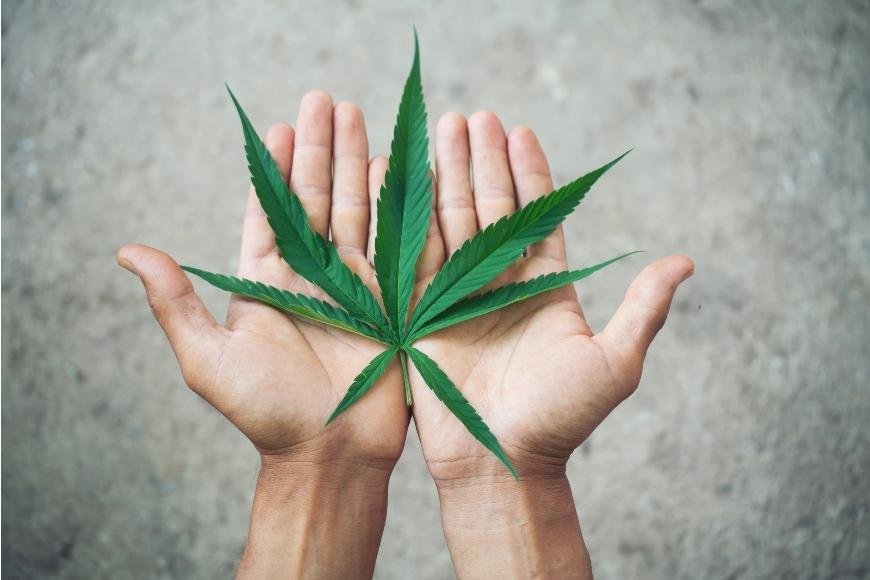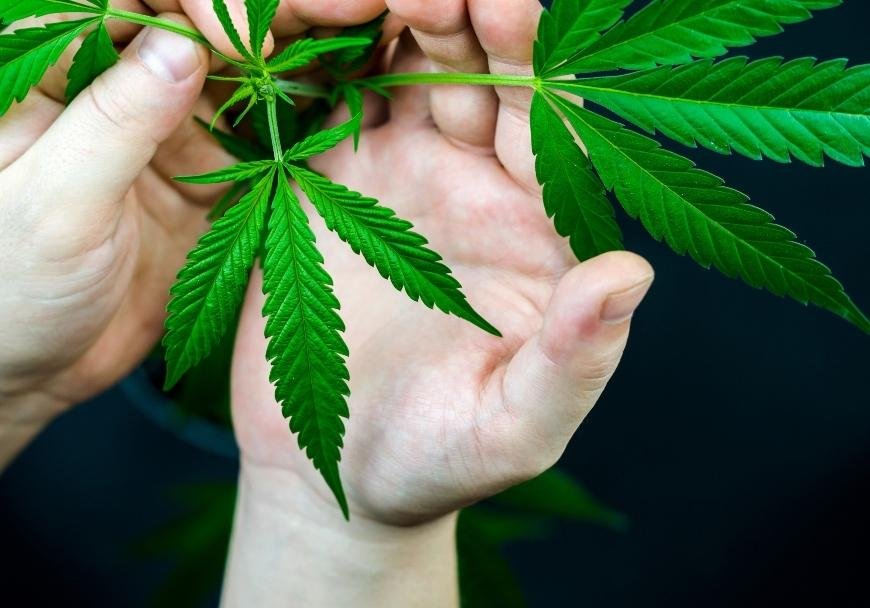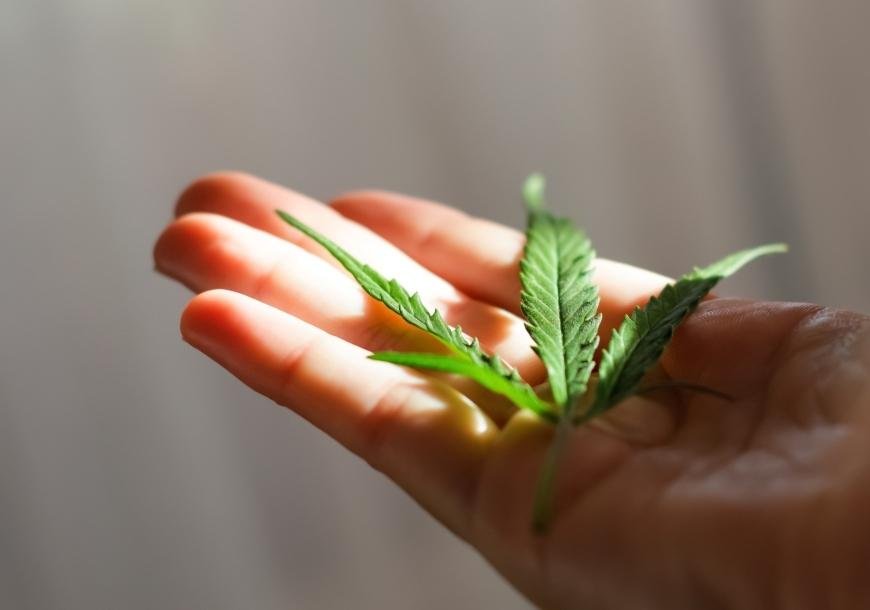Ways to Use Leftover Cannabis Trim and Fan Leaves
Don't waste your cannabis trim and fan leaves! Learn how to make extracts, edibles, compost, and more with these creative uses.

Ways to use leftover cannabis trim and fan leaves are often overlooked by many growers, but these plant parts hold a surprising amount of value. In this blog post, we will explore various methods for making the most out of your cannabis trimmings and fan leaves.
We'll begin by discussing decarboxylation, an essential process that activates the cannabinoids in your plant material. Next, we'll delve into extraction techniques to harness the full potential of these leftovers.
Additionally, you'll learn proper storage and labeling practices for your cannabis extracts to ensure their potency is preserved over time. Furthermore, we will provide some mouthwatering edible recipes that incorporate both trim and fan leaves as key ingredients.
Last but not least, we'll touch upon other creative ways to use leftover cannabis trim and fan leaves in order to minimize waste while maximizing benefits from every part of your beloved plants.
Table of Contents:
- Decarboxylating Cannabis Trim and Fan Leaves
- Extracting Cannabinoids from Trim and Fan Leaves
- Storing and Labeling Cannabis Extracts
- Making Edibles with Cannabis Trim and Fan Leaves
- Other Uses for Cannabis Trim and Fan Leaves
- FAQs in Relation to Ways to Use Leftover Cannabis Trim and Fan Leaves
- Conclusion
Decarboxylating Cannabis Trim and Fan Leaves
Decarboxylation is a process that activates the cannabinoids in cannabis trim and fan leaves. This process is necessary to get the full effects of cannabis when consuming it. Heating up cannabis, usually with an oven or slow cooker, for a set amount of time at a certain temperature is necessary to activate the cannabinoids in trim and fan leaves. It’s important to note that decarboxylating trim and fan leaves takes less time than flower because they are smaller pieces with more surface area exposed to heat.
When preparing your cannabis for decarboxylation, you should first break down the trim and fan leaves into small pieces so that they will be exposed to more heat during the process. Spread the trim and fan leaves on a parchment paper-lined baking sheet, evenly distributing them before putting in an oven preheated to 245°F (118°C). Let the trim and fan leaves cook for half an hour to forty-five minutes until they acquire a light brown hue, stirring intermittently if required. Once finished baking, allow your decarbed material cool completely before storing or using it in recipes or other applications.
Vacuum sealing the decarbed trim and fan leaves in glass jars after allowing them to cool completely is the optimal way of storing them, as this helps maintain potency while warding off any moisture that could otherwise degrade cannabinoid content over time. Moreover, tagging each jar with its contents and date of preparation will enable accurate tracking of product quality control throughout its shelf life - a must-have if you intend on utilizing these materials for edibles or tinctures down the line.
Decarbing trim and fan leaves offers several benefits beyond just activating cannabinoids. These materials can be used as cooking ingredients, such as butter replacements when making baked goods like cookies or brownies. Additionally, they can be added directly into smoothies for extra nutrition or blended into sauces and dressings. Even topicals like salves and balms can benefit from having some additional plant matter included. Decarbing trim and fans not only allows us access to all those beneficial compounds but also opens up new possibilities when creating delicious treats.
Decarboxylating cannabis trim and fan leaves is an easy process that can be done at home to maximize the potency of your product. By extracting cannabinoids from these leftover materials, you are able to unlock a new level of potential with each harvest. Subsequently, let's delve deeper into the mechanics of this extraction method.
Extracting Cannabinoids from Trim and Fan Leaves
Cannabinoids, the compounds present in cannabis plants that can offer therapeutic advantages, are obtainable from trim and fan leaves. Extracting cannabinoids from trim and fan leaves can be a great way to get more out of your harvest, as these parts of the plant often contain high concentrations of THC, CBD, CBG and other beneficial compounds.
There are several methods for extracting cannabinoids from trim and fan leaves. The most popular is using solvents like butane or ethanol. Butane extraction requires you to place your trim or fan leaves into an extraction tube filled with butane gas which then extracts all the active ingredients from the plant material when heated up. Ethanol extraction works similarly except it uses alcohol instead of butane gas as a solvent. Both approaches have pros and cons, yet both yield top-notch extracts which can be utilized for a range of purposes including edibles, tinctures or topical treatments.
Extracting cannabinoids from trim and fan leaves is a great way to make the most of your cannabis harvest, but it's important to store and label any extracts you create for safety. To ensure safety, it is essential to properly store and label any cannabis extracts you create.

Storing and Labeling Cannabis Extracts
Making cannabis extracts is an important part of any recreational drug user’s arsenal. Extracting cannabinoids from trim and fan leaves can be a great way to get the most out of your stash, but it’s important to remember that proper storage and labeling are key for keeping your extracts safe and potent.
To maintain potency, cannabis extracts should be stowed in sealed receptacles distant from warmth or luminescence sources. This will help preserve their potency over time as well as prevent them from becoming contaminated with other substances. Keep cannabis extracts out of reach of children or pets to avoid accidental ingestion. Additionally, labeling each container with its contents is essential so that you know what type of extract is inside without having to open it up first.
When crafting cannabis-based items such as edibles or tinctures, it's essential to accurately gauge the amount of extract needed. Ensure any excess extract is sealed in an airtight container and labeled, so that it doesn't spoil prior to reuse. On the flip side, if there isn't enough extract left over for another batch right away then try freezing what's left until more trim and fan leaves become available at a later date - just remember not freeze anything containing alcohol.
Labeling should include information such as strain name (if applicable), extraction method used (e.g., BHO vs CO2), date extracted/processed/packaged/stored, dosage instructions (if applicable) and any warnings about potential hazards associated with use (e.g., “Keep Away From Children & Pets”). This will ensure everyone who handles the extract knows exactly what they're dealing with at all times – even if someone else made the original batch. It may seem like extra work now but trust us: this step could save lives in case something goes wrong down the road due to improper handling or usage.
Finally, never underestimate the power of quality control when making cannabis extracts; test batches often throughout production process by taking small samples along way until final product meets desired standards before packaging up entire batch into containers for storage or sale purposes. Doing this regularly helps ensure consistency across batches while reducing chances of unwanted contaminants slipping through unnoticed during production process which can cause serious health issues for users further down the line.
Storing and labeling cannabis extracts properly is essential to ensure their potency, quality, and safety. With the right ingredients, you can make delicious edibles with your leftover cannabis trim and fan leaves that will be sure to please any palate.
Making Edibles with Cannabis Trim and Fan Leaves
Cannabis trim and fan leaves are an often overlooked source of cannabinoids that can be used to make edibles. Decarbing is essential to unleash the THC and other cannabinoids, such as CBD and CBG, from trim and fan leaves. To decarboxylate cannabis trim and fan leaves, preheat your oven to 240°F (115°C) and arrange the material on a parchment paper-lined baking sheet before baking for 30 minutes. Bake for 30 minutes before adding it to any recipes or storing it away for later use.
Making tinctures with cannabis trim is one of the most popular ways to take advantage of its cannabinoid content. Start by combining 1 cup (240 ml) of high-proof alcohol such as Everclear or vodka with 2 ounces (56 g) of ground up trim or fan leaves in a jar. Seal the jar tightly, then store it in a cool dark place for two weeks while shaking occasionally. After two weeks, strain out the plant material using cheesecloth or another fine mesh strainer into a clean container and discard the plant matter left behind. Your tincture will now be ready to use.
Once the desired cannabinoids have been extracted from your chosen extraction setup according to manufacturer instructions, fill up empty gelatin capsules available at many health food stores or offline retailers near you with the oily liquid product. Store the extracted cannabinoids in sealed containers, away from light sources until they are ready to be ingested.
Making edibles with cannabis trim and fan leaves is a great way to make use of the leftover parts of your plant, as it can still provide you with the desired effects. One can find other means to make use of these cannabis cuttings, beyond just ingesting them. The next heading will explore some additional uses for cannabis trim and fan leaves.
Other Uses for Cannabis Trim and Fan Leaves
Nonetheless, these trimmings possess the potential to be transformed into a range of products that can provide pleasure and relief for both recreational and medicinal cannabis users. From teas to topicals, there is much more you can do with your cannabis trim than simply throwing it away.
One way to use cannabis trim is by making tea. Simply steep the trimmings in hot water for a few minutes, then strain out any remaining plant material to create a liquid containing small amounts of cannabinoids. The resulting liquid will contain small amounts of cannabinoids like THC or CBD depending on the strain used, so make sure to check labels before consuming. This method also works well for larger fan leaves which may have been discarded during harvesting due to their size or shape.
Another great use for leftover fan leaves is making edibles such as cannabutter or cannabis oil. To do this, growers simply discard all stems from their trimmed buds and grind up only the smaller sugar leaves into a fine powder using either a food processor or mortar and pestle. Then they mix this powder with melted butter (or coconut oil) over low heat until all of the plant matter has dissolved into an ideal ingredient for baking delicious treats like brownies or cookies.
Rather than grinding the trim and fan leaves into an edible form factor, some growers opt to take things up a notch by making hash directly from their weed trimmings. To do this, one needs freshly harvested plants with their leaves still intact; then they press these between two sheets of wax paper until all moisture is extracted from the material, leaving behind only concentrated resin glands that can be scraped off onto parchment paper for consumption. This process requires skill and finesse but yields results that are well worth the effort.
The possibilities don't end here. There are plenty more uses for your weed trim including creating salves, tinctures, balms and even homemade milk alternatives made with ground-up cannabis stems mixed with almond milk. Don't discard your cannabis trimmings; make the most of them instead.

FAQs in Relation to Ways to Use Leftover Cannabis Trim and Fan Leaves
What can I do with leftover fan leaves and stems?
Leftover fan leaves and stems can be used to make cannabis-infused butter or oil, which is a great way to add extra potency to edibles. Alternatively, you can use them in teas for a milder effect or even as an ingredient in homemade topical creams. To maximize the benefit of your leftovers, consider grinding them up into powder and adding it directly into food dishes like pasta sauces or smoothies. Lastly, don’t forget about making cannabutter tinctures with alcohol – these are easy to store and have long shelf lives.
What are the health benefits of cannabis fan leaves?
Cannabis fan leaves are known to contain many beneficial compounds, such as cannabinoids and terpenes. These compounds have been found to possess various therapeutic properties that can help with a range of health issues. CBD has been demonstrated to have anti-inflammatory effects, potentially mitigating pain and inflammation in the body. Additionally, CBD also helps regulate moods by reducing stress levels and improving sleep quality. Terpenes present in cannabis fan leaves may also act as antioxidants, helping protect cells from damage caused by free radicals or toxins. Furthermore, some studies suggest that consuming cannabis fan leaves could potentially provide protection against certain cancers due to its antioxidant activity.
Can you use the stems and leaves of cannabis?
Yes, you can use the stems and leaves of cannabis. The stems and leaves contain a variety of cannabinoids that may have medicinal benefits when consumed or applied topically. Although they are not as potent as flowers, these parts still possess some therapeutic value. Moreover, the stems and leaves can be utilized to create edibles like tinctures or tea infusions that offer a distinct approach for consuming cannabis without smoking.
Conclusion
With the right preparation and knowledge, cannabis trim and fan leaves can be used for a variety of applications. From decarboxylating plant material to extracting cannabinoids, storing extracts safely, making edibles or other products - there are many ways to use leftover cannabis trim and fan leaves that you may not have considered before. With careful research into the process involved in each application as well as any potential risks associated with them, these parts of the plant can become valuable resources for creating unique experiences.























































































































